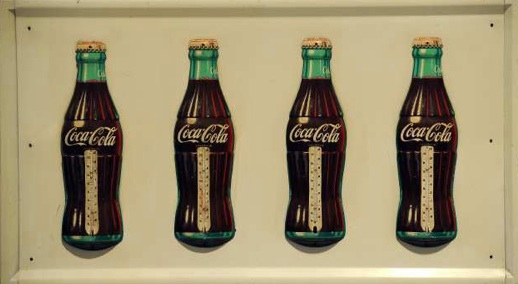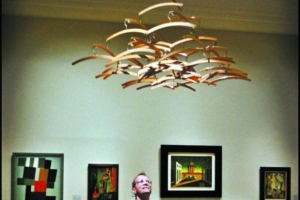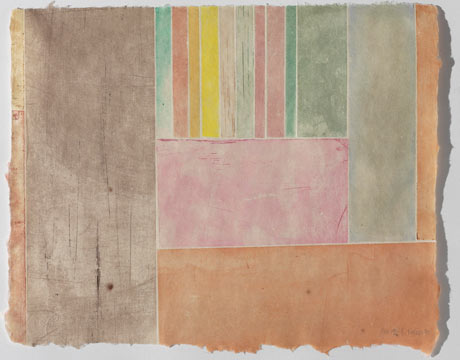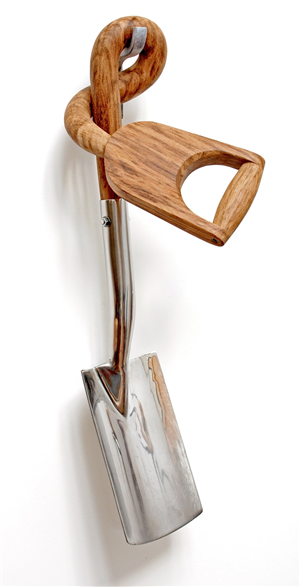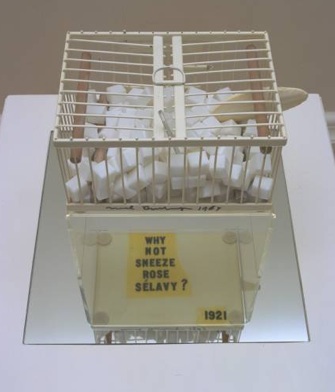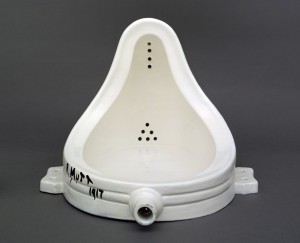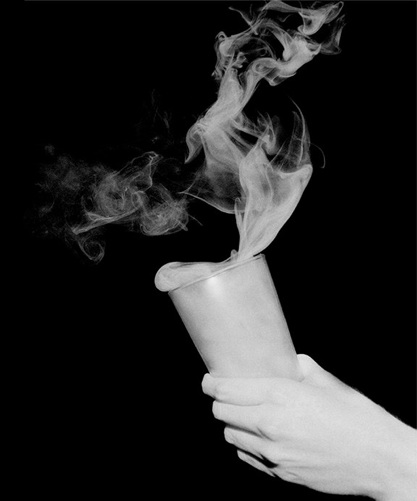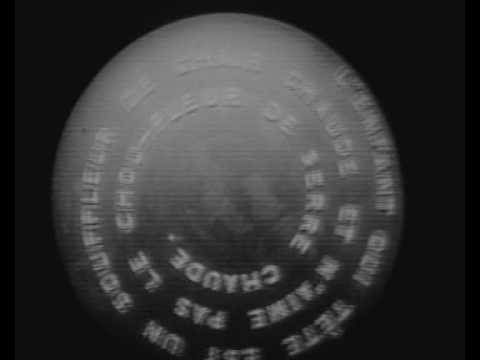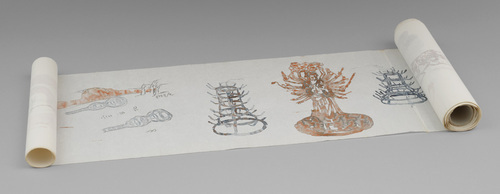Duchampian News & Views
-
Dennis Hopper, Duchampian
July 13, 2010 A major retrospective of the artistic career of late actor Dennis Hopper is receiving uneven reviews. After genuflecting to Hopper's apparent influences and enthusiasms -- a bit of Warhol here, an encounter with Duchamp there, Basquiat, Rauschenberg -- critics are almost invariably forced to reflect on the nature of Hopper as primarily a performer, a non-artist in the visual sense, an amateur. Some mourn the artist that could have evolved out of this slurry of modern and cont.. read more... -
New Man Ray Found
July 12, 2010Two lost Man Ray pieces — one a mobile assemblage of wooden coat hangers, the other a postcard — have turned up in Scotland as part of the Lee Miller / Ronald Penrose estate and will be exhibited in Edinburgh through January. If only lost Duchamp pieces could turn up so often!
read more... -
The Visual Art of John Cage
July 9, 2010Indeterminacy — in the sense used by Duchamp in the Standard Stoppages or the Musical Erratum — was a core compositional value for John Cage. His visual work demonstrates similar impetus, from Not Wanting To Say Anything About Marcel onward. A major retrospective of Cage’s paintings and other visual work in the London suburb of Gateshead explores these points.
read more... -
Both Sides of the 1917 Divide
July 8, 2010Sculptor Derek Morris considers the 1917 exhibition of Fountain as the watershed of modern art, dividing studio-oriented work that went before from the conceptual work that has since conquered the art world. The Norfolk Contemporary Art Society’s current show bridges the gap, with "assisted readymades" in the Duchampian mode and more salon-friendly paintings and sculpture.
read more... -
Echoes of Rrose
July 7, 2010 The small 1964 assemblage Why Not Sneeze Rose Selavy is on exhibit through October 10 at Buffalo's Albright-Knox Art Gallery, part of a retrospective show called "ECHO." What is exciting about this display of Why Not Sneeze is the emphasis placed on its textual dimension: mirrors allow viewers to apprehend both the work's sculptural character and scrawled title (normally hidden on its underside) simultaneously. The effect keeps both aspects of the Duchampian pun (mo.. read more... -
Fountain in Scotland
July 6, 2010 The installation of one of Duchamp's Fountains in a new exhibition of dada and surrealist works at Scotland's National Gallery of Modern Art inspires plenty of local musing about how the sometimes florid sex-and-death conceptions of painters like Magritte and Miro plays into the Presbyterian milieu of formal Edinburgh. As well, there are insights about the Fountain as not so much a work of found sculpture to be appreciated in sculptural terms, but as a work of anti-sculpture,.. read more... -
The Duchampian Echoes of Lindsey Price
July 5, 2010Reflections on Duchamp — the readymades, chance pieces and general "conceptual" art — provide a solid backstop to the photography and installations of contemporary artist Lindsey Price. In fact, at least one critic seems more anxious to rehearse the Duchampian than the Pricean aspects of her current show at Baer Ridgway Exhibitions.
read more... -
Dreams That Money Can Buy
July 2, 2010Hans Richter’s 1947 film Dreams That Money Can Buy was revived recently at the San Francisco Museum of Modern Art. Alexander Calder, Marcel Duchamp, Max Ernst, Fernand Léger and Man Ray worked on the project, making it an extraordinary snapshot of a relatively brief moment in postwar time.
read more... -
Duchamp and the Long Scroll of Huang Yong Ping
July 1, 2010MOMA’s newly reopened contemporary art galleries contain plenty of references — oblique and direct — to the role of Marcel Duchamp as father of conceptual art. One piece now on display is Franco-Chinese artist Huang Yong Ping’s epic "Long Scroll," which cycles through his artistic genealogy across the span of some 50 feet of classically oriented imagery.
Amid the Buddhas and geometric abstractions, careful viewers will find bottleracks and more.
read more...




